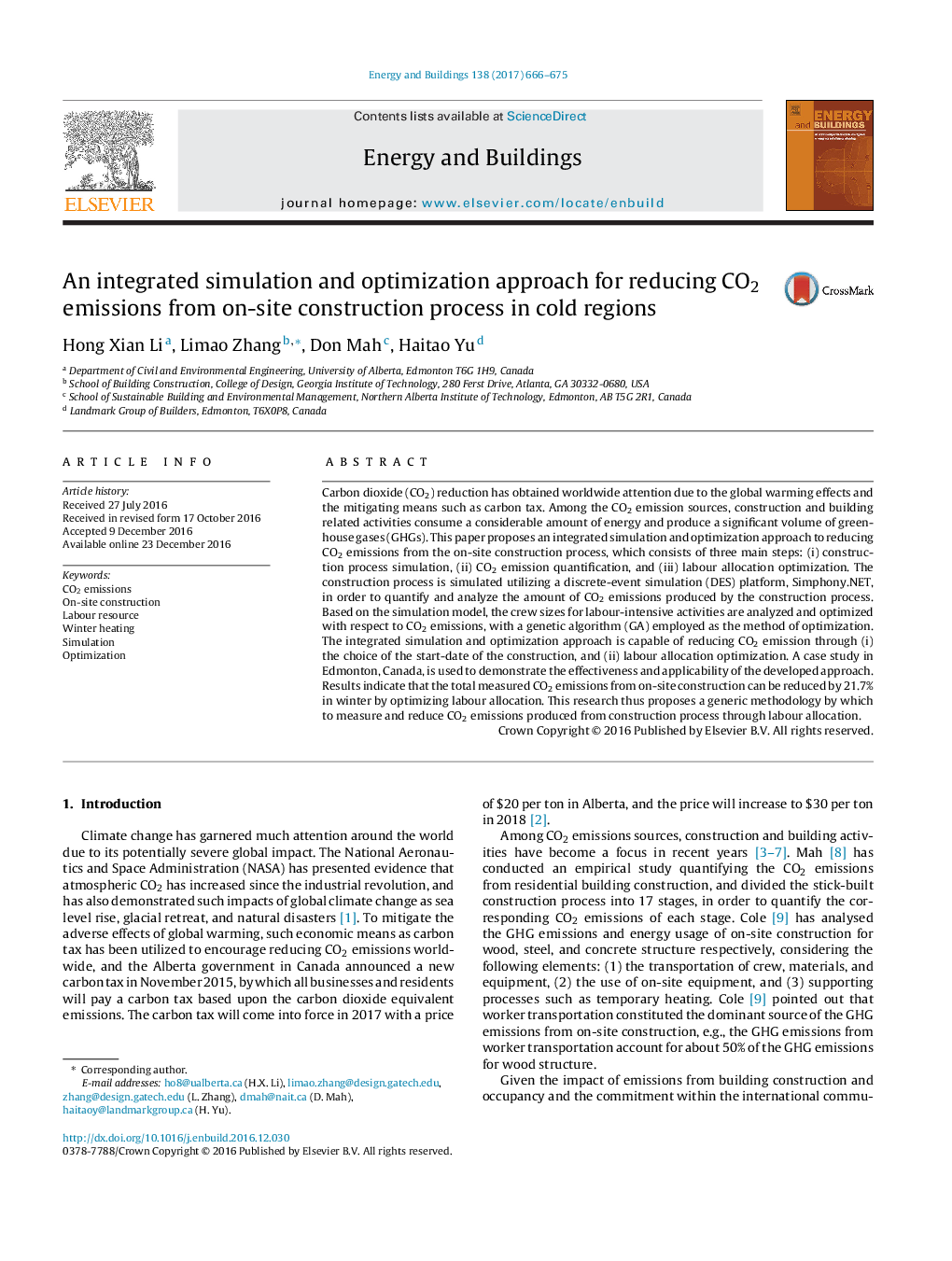| Article ID | Journal | Published Year | Pages | File Type |
|---|---|---|---|---|
| 4919475 | Energy and Buildings | 2017 | 10 Pages |
Abstract
Carbon dioxide (CO2) reduction has obtained worldwide attention due to the global warming effects and the mitigating means such as carbon tax. Among the CO2 emission sources, construction and building related activities consume a considerable amount of energy and produce a significant volume of greenhouse gases (GHGs). This paper proposes an integrated simulation and optimization approach to reducing CO2 emissions from the on-site construction process, which consists of three main steps: (i) construction process simulation, (ii) CO2 emission quantification, and (iii) labour allocation optimization. The construction process is simulated utilizing a discrete-event simulation (DES) platform, Simphony.NET, in order to quantify and analyze the amount of CO2 emissions produced by the construction process. Based on the simulation model, the crew sizes for labour-intensive activities are analyzed and optimized with respect to CO2 emissions, with a genetic algorithm (GA) employed as the method of optimization. The integrated simulation and optimization approach is capable of reducing CO2 emission through (i) the choice of the start-date of the construction, and (ii) labour allocation optimization. A case study in Edmonton, Canada, is used to demonstrate the effectiveness and applicability of the developed approach. Results indicate that the total measured CO2 emissions from on-site construction can be reduced by 21.7% in winter by optimizing labour allocation. This research thus proposes a generic methodology by which to measure and reduce CO2 emissions produced from construction process through labour allocation.
Keywords
Related Topics
Physical Sciences and Engineering
Energy
Renewable Energy, Sustainability and the Environment
Authors
Hong Xian Li, Limao Zhang, Don Mah, Haitao Yu,
